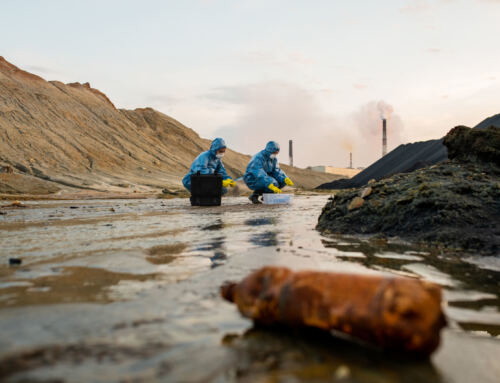Recently, H.E.L invited four specialist flow chemistry practitioners to speak at an online symposium on the topic. After the speakers had shared their research and experiences and answered questions from delegates, we took the opportunity to ask some questions of our own. Here, our speakers share their own ‘pain points’ of working in flow.
- The online/offline analysis argument explored
- Parallel reactors reduce screening challenges
- The problem of particle size
- Solving the problem of gas/liquid solubility
The online/offline analysis argument explored
Dr. Russell Taylor, Lecturer in Synthetic Inorganic Chemistry & EPSRC Manufacturing Fellow, and PhD Student Samuel Raynes, both from Durham University, highlighted analyzing the online gas phase as their first problem. The challenge faced with online analysis is to keep everything in the gas phase, especially when working with GC-MS-BID. Some of the temperatures they need to achieve for their research present a challenge. Working with propane dehydrogenations requires a temperature of
600 °C, and for methane aromatization, it’s 800 °C. At these high temperatures, it can be a struggle keeping products in the appropriate phase during online analysis.
When comparing online and offline analysis, both Sam and Russell agreed that online analysis was preferred. This is especially true during studies where parameters are changed mid-experiment, such as step increases in temperature. Online analysis puts you in a strong position to identify and analyze results as they happen. Alternatively, working offline can leave you needing to ask yourself if you have accounted for everything. Is there an acceptable carbon balance? Is there a risk of contamination in the sampling procedure? Were there any degrading or loss of sample?
As long as the detection method has been set up correctly, working online brings with it the benefit of knowing that everything that comes out of the reactor goes straight into the GC. The Durham University researchers concluded they couldn’t analyze neon or helium online due to the inert nature of the gases.
Parallel reactors reduce screening challenges
The Durham team also recognized that it’s typical for catalysis screening techniques to take place in batch, allowing multiple reactors and multiple catalysts to run on the same system. To differentiate, flow processes usually adopt single reactor experiments, investigating catalysts one at a time. Having more than one flow reactor would always be their ideal, especially in situations where screening needs to happen in high volumes. With multilple reactors, parallel testing could considerably cut down the time involved, from multiple days to a single day.
Flow catalysis in parallel creates its own engineering challenges. Specifically, the time spent testing would need to be extended for data quality reasons. With several flow reactors all running through one analysis system, and each reactor requiring an analysis method that took half an hour to complete, the outcome would be that fewer data points would be produced each day for each sample. Dr. Taylor concluded that there are compromises to me made, when multiple flow reactors are used with one analysis system. With a single (or limited) analysis system, an experiment would either yield frequent data analysis with lots of data points for one catalyst or fewer data points per catalyst in a parallel screening mode. The experimental need would drive the researchers to choose the most suitable approach for their studies.
The problem of particle size
Chemist Lee Edwards, Investigator, and GSK Associate Fellow, felt the biggest problem his heterogenous work faced was the catalysts themselves. Pharmaceutical companies need to buy in catalysts with very specific particle sizes for their flow applications, normally between 50-400 microns. Finding a sufficient quantity of catalysts within this range is the challenge. GSK puts a lot of energy into sourcing specific catalysts from several catalyst suppliers and working with academics to generate new ones. In a bid to combat this, GSK has formed an informal cooperative with other pharma companies to improve their buying power and petition the catalyst suppliers for improved supply. Lee is hopeful that a collective approach will improve supply across pharma as a whole.
Dr. Joshua Barham, Sofja Kovalevskaja Group Leader at the University of Regensburg, was very much in agreement with Lee about the importance of particle size. The issue of flow catalysis techniques, especially to achieve online characterization of events in a heterogenous suspended flow. Joshua was grateful for the photocatalyst received from the Max Planck Institutes, who characterize the particle size distribution for him. But there are further challenges – when handling them in flow, the catalysts can conglomerate, leading to significant pressure drops which need to be mitigated. To immobilize the catalyst would mean no light penetration, which is a significant issue for a batch heterogeneous reaction using a photocatalytic system.
Improving the problem of gas/liquid solubility
Dr. Barham spoke about several issues faced in the arena of gas/liquid solubility. Specifically maximizing the amount of oxygen in solution when working with organic solvents. There are challenges in balancing gas/liquid flow rates, pressure drops, and reactions that evolve gas or where there’s not enough gas in solution – especially at the smaller scale where Joshua and this team operate.
Increasing pressure, slowing down feed rates, and other factors could help resolve these issues, but these can also create a problem; higher flow rates to increase productivity and mass transfer would mean losing out on residence time, which is an important element in photochemistry.
Flow chemistry is giving both academia and industry innovative solutions, but not without its challenges. We’re grateful to our guests for sharing their pain points in this arena. To hear more about Flow Chemistry’s current developments, watch the full webinar recording of the H.E.L Flow Chemistry Mini-Symposium 2021









